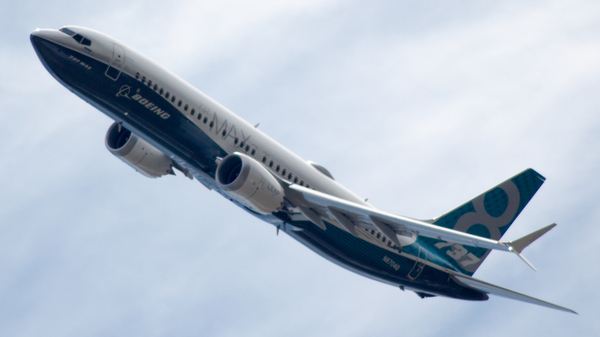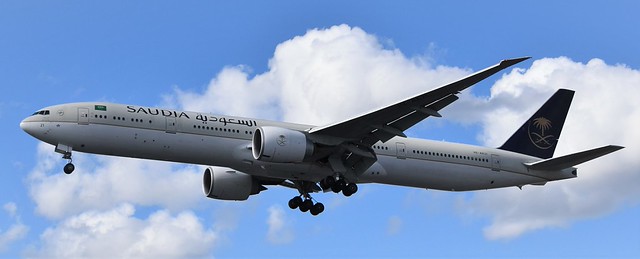Air Nostrum AT72 at Madrid on Jun 30th 2010, engine fire indication
Last Update: December 12, 2014 / 14:54:43 GMT/Zulu time
Incident Facts
Date of incident
Jun 30, 2010
Classification
Incident
Cause
Engine fire indication
Airline
Air Nostrum
Aircraft Type
ATR ATR-72-200
ICAO Type Designator
AT72
The incident was caused by the fracture, due to fatigue failure, of a rotor blade in the first stage of the power turbine in the aircraft’s no. 1 engine, which led to a damage progression in the engine that resulted in a fire in said engine.
Following departure from Madrid's runway 36L the aircraft was climbing through about 9000 feet when a slight mist was observed in the cockpit, the flight crew, captain (37, ATPL, 5,432 hours total, 3,953 hours on type) assisted by first officer (37, ATPL, 3,768 hours total, 3,189 hours on type), inquired with cabin crew who also confirmed slight mist appearing in the cabin. Climbing through 9134 feet MSL the crew received an engine #1 fire warning, shut the engine down and discharged both fire bottles while executing the related checklists. Following the discharge of the second fire bottle the fire warning extinguished.
The crew subsequently requested a priority return to Madrid and landed safely back on Madrid's runway 33L 19 minutes after departure and taxied to the apron escorted by emergency services.
The CIAIAC reported the left hand engine had been installed on the aircraft on Mar 5th 2010. Since the last overhaul of the engine on Feb 10th 2010 the engine had accumulated 674 flight hours in 902 cycles, the right hand engine had been installed on the aircraft on May 20th 2010, since the last overhaul on May 12th 2010 the engine had accumulated 235 flight hours in 293 flight cycles.
In a post flight inspection mechanics were unable to move the propeller due to the turbine section of the engine being jammed. There was evidence of fire outside the hot section of the engine, behind the firewall, on the right hand side of the engine affecting various cables and lines. The lubricant oil vent line for #6 and #7 bearings was broken, the fastening screws on #6 and #7 oil scavenge pumps were loose, various cable and piping brackets were damaged. Several fractured blades were found on the last disc of the turbine rotor, the stator was substantially damaged, and a section of about 25 degrees of the arc was perforated at the abrasion seal.
Following laboratory examination of the engine the CIAIAC determined the most likely sequence of events was:
Two blades of the stage 1 rotor of the power turbine fractured causing vibrations and altered gas flow path inside the engine. The fuel flow is increased to maintain engine torque causing a rise of temperature between power and low pressure turbine. The vibrations cause a misalignment and oscillations on the housings of bearings #6 and #7 causing the attachment bolts to shear, the detached components cause damage to all other components they come into contact with. The vibrations further cause the rupture of the vent line for bearings #6 and #7 as well as piping and cable fasteners. Oil exited from the ruptured oil vent line and ignited when it came into contact with the outer surface of the hot section of the engine. The crew shut down the engine preventing further damage.
The CIAIAC stated: "The laboratory analyses of the two broken blades from the first stage of the power turbine (PT1) showed that one had experienced a fatigue fracture, and that the other had fractured as a result of the damage caused by the piece that detached from the first blade; both fractured blades exhibited fatigue cracking originating in areas of casting micro-porosity in the airfoils."
The CIAIAC stated: "A total of 11:41 minutes elapsed from the time the warning was received until all wheels were on the ground."
The CIAIAC analysed: "As concerns the crew’s actions, the crew strictly adhered to the procedures established by the operator at all times. This allowed them to work quickly and efficiently and limited the damage sustained by the engine."
With repect to the engine failure mode the CIAIAC analysed: "We must also consider the incidence of the cause-effect relationship between the fracture of a blade and an in-flight fire, which adds a qualitative factor to the analysis of this type of incident. Bearing in mind the low rate of blade failures of this type, the low probability of a fire occurring as a result of such a failure, and the effectiveness of the applicable operating procedures, no measures in addition to those already available for preventing and dealing with this type of incident are deemed necessary."
No safety recommendations were issued as result of the investigation.
Incident Facts
Date of incident
Jun 30, 2010
Classification
Incident
Cause
Engine fire indication
Airline
Air Nostrum
Aircraft Type
ATR ATR-72-200
ICAO Type Designator
AT72
This article is published under license from Avherald.com. © of text by Avherald.com.
Article source
You can read 2 more free articles without a subscription.
Subscribe now and continue reading without any limits!
Read unlimited articles and receive our daily update briefing. Gain better insights into what is happening in commercial aviation safety.
Send tip
Support AeroInside by sending a small tip amount.
Related articles
Diploma of Aviation: Common Challenges for Student Pilots
Pursuing a Diploma of Aviation (Commercial Pilot Licence) is an exciting yet demanding journey. For many aspiring aviators, this qualification…
After an Aviation Incident in New York Airspace: What Happens Next
When an aviation incident occurs in New York airspace, whether it’s a commercial jet, a private charter, or a general aviation flight, the…
AeroInside Yearly Aviation Safety Review 2025
2025 is over and it is time to look back and see again what happend in aviation safety. Have a look at our summary below.All in all, 1041 new…
AeroInside Monthly Aviation Safety Review December 2025
December 2025 was a busy month in aviation safety. Please find our summary below.All in all, 63 new articles have been published during last month. 5…
Flight Training Stress: Navigating Turbulence as a Student Pilot
Becoming a pilot is a thrilling and rewarding experience, but the path to the cockpit is often filled with challenges, especially when it comes to…
Newest articles
Tway B38M enroute on Jan 10th 2026, power bank thermal runaway, 8 injuries
A Tway Air Boeing 737-8 MAX, registration HL8579 performing flight TW-634 from Sanya (China) to Cheongju (South Korea) with 32 passengers and 6 crew,…
Saudia B773 at Islamabad on Oct 14th 2024, landed on wrong runway
A Saudi Arabian Airlines Boeing 777-300, registration HZ-AK21 performing flight SV-724 from Riyadh (Saudi Arabia) to Islamabad (Pakistan) with 399…
Subscribe today
Are you researching aviation incidents? Get access to AeroInside Insights, unlimited read access and receive the daily newsletter.
Pick your plan and subscribePartner

ELITE Simulation Solutions is a leading global provider of Flight Simulation Training Devices, IFR training software as well as flight controls and related services. Find out more.
SafetyScan Pro provides streamlined access to thousands of aviation accident reports. Tailored for your safety management efforts. Book your demo today
AeroInside Blog
Popular aircraft
Airbus A320Boeing 737-800
Boeing 737-800 MAX
Popular airlines
American AirlinesUnited
Delta
Air Canada
Lufthansa
British Airways


